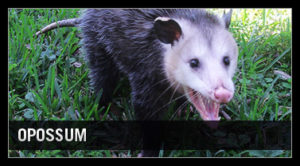9 Things You Need to Know About Wildlife Removal
While the knee jerk reaction to a wildlife situation is to end the problem, depending on your location, that could get you in legal trouble. Here are nine things you need to know before you take matters into your own hands.

1. You need a Trapping License for wildlife removal.
Animals like skunks, raccoons, squirrels and even snakes, are considered wildlife. In California a Trapping License is required to remove and/or dispatch these animals from your property.
2. There are rule that you must follow.
In California, wildlife that appear sick or diseased, pose a risk to humans or livestock or cause damage to property can be removed from your property. Only the property owner or a licensed professional can remove wildlife that falls into these categories, and there are still rules to be followed in the removal and disposal of these animals.
3. Nuisance animals are also regulated.
In California, exemptions to the above regulations can be granted for “nuisance animals.” This may include raccoons, skunks and other small mammals. Even with a nuisance animal removal permit, there are still things you cannot do when trapping or removing wildlife. For example, in California , you must prove a threat exists to human health or safety before attempting to remove skunks, raccoons or other animals. Wildlife have to be euthanized by a licensed professional, and must not be relocated.
4. Some Snakes, in particular, often come with extra restrictions.
Caution should always be taken when dealing with a snake problem, as many venomous species look similar to their nonvenomous counterparts.
5. It is illegal to release or relocate animals.
In most California, it is illegal to release or relocate wildlife this means you cannot, for any reason, trap an opossum on your property and let it go in another city, state or national park. It is also illegal to release animals on property owned by other people.
6. Folk tale remedies don’t always work.
There are many products marketed to remove or repel wildlife from around your home, as well as tales of success using certain plants. However, research has shown that these tricks and products are often not effective in repelling wildlife. Even worse — some can attract other animals to your home.
7. It’s a good idea to do your research.
Some wildlife have extra risks of spreading disease. Take, for example, raccoons. These animals pick one location, and they all use it as a latrine. Raccoon feces can carry a type of roundworm larvae that is harmful to people. You should never attempt to clean up a raccoon latrine. If you have one in your yard or in your home, contact a professional.
8. They’re not for sale.
Most states prevent you from keeping, selling or giving away wildlife caught on your property. Any animals you trap must be dispatched on the property it was caught on and must be disposed of humanely You cannot keep live, trapped animals on your property indefinitely.
9. Wildlife indoors should be excluded versus eliminated.
For wildlife that has taken up residence inside your home, removal should start with attempting to get the animals to leave your home. Taking steps to eliminate them inside could result in dead animals trapped in the walls, crawl space and other hard-to-reach areas. Exclusion methods should be attempted by a professional, who knows where to look and the best approach to take for each type of wildlife threat.
Wheeler’s provides Trapping services in Temecula, Murrieta and Carlsbad California.
Call us at 951-681-2847


